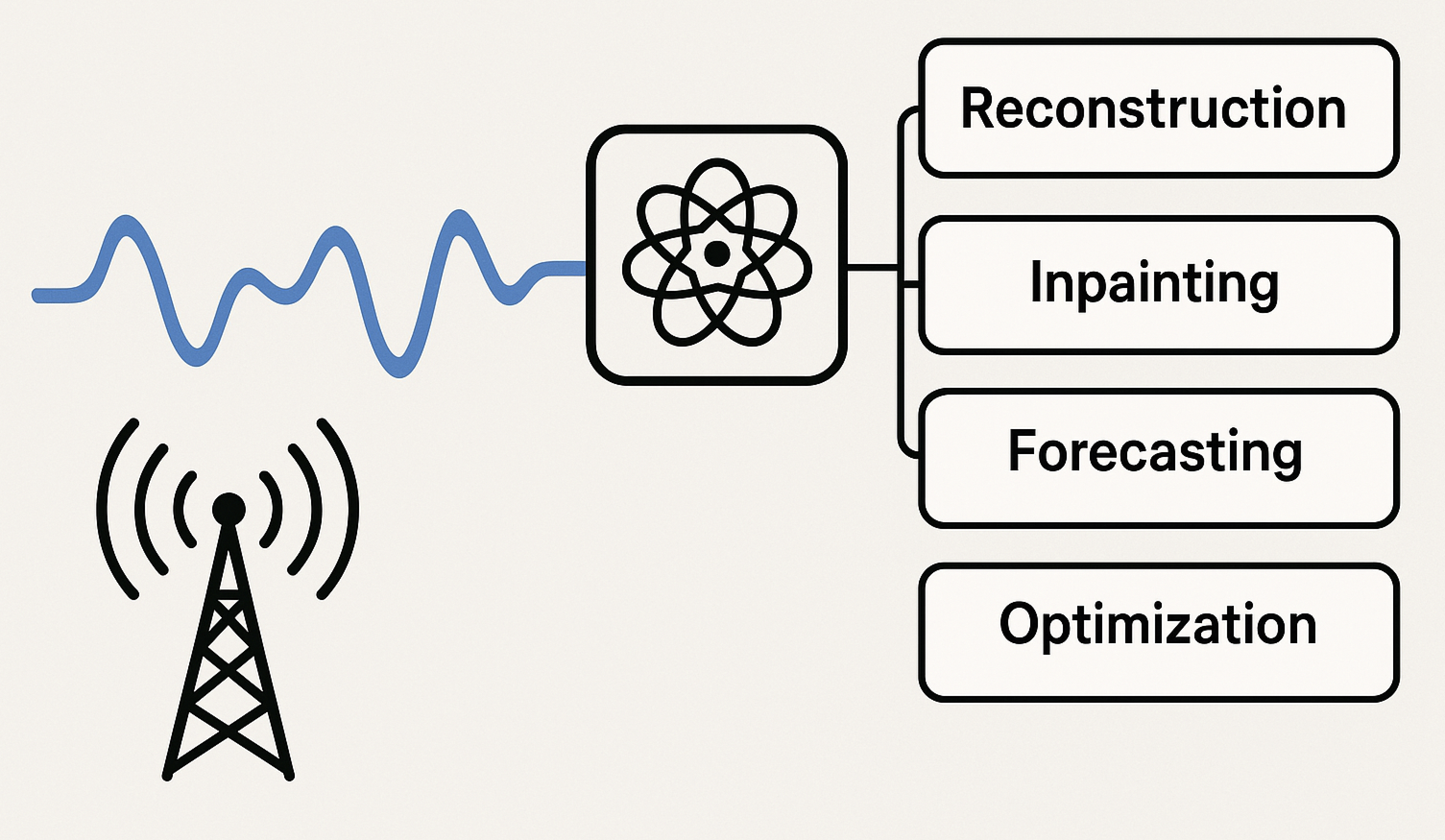
Generative AI for Wireless Networks
Generative AI allows us to leverage machine learning models to synthesize realistic wireless environments, optimize network performance, and enhance signal processing. By generating high-fidelity synthetic data, these models enable improved training for AI-driven network management, dynamic spectrum allocation, and interference mitigation. Generative AI also facilitates digital twin development, allowing for real-time simulation of network conditions to refine deployment strategies and enhance system resilience.
A critical challenge in wireless communication is the unpredictable nature of radio frequency (RF) environments, where interference, mobility, and multipath effects degrade performance. Generative models can learn the statistical properties of these environments, enabling the synthesis of diverse and representative datasets for training robust AI-driven controllers. These models also enable solutions for downstream problems such as helping reconstruct signals from noisy observations, estimate channel states more accurately, and develop advanced beamforming techniques.
Key components of a generative AI-driven wireless network include synthetic channel modeling, AI-enhanced RF sensing, and adaptive resource allocation. Synthetic channel models capture the dynamics of real-world propagation conditions, while AI-driven RF sensing techniques extract meaningful features for enhanced situational awareness. Additionally, generative models assist in dynamically optimizing resource allocation across networks by predicting congestion, mitigating interference, and enabling proactive spectrum management.
Large-scale, monolithic wireless optimization solutions face scalability and adaptability constraints due to computational limitations and the complexity of real-world deployments. By integrating generative AI models into wireless systems, we can develop scalable, data-driven approaches that improve spectrum efficiency, network resilience, and end-to-end communication reliability. Our research focuses on designing, training, and deploying generative models that enhance wireless network intelligence, enabling more efficient, adaptive, and resilient next generation (NextG) communication systems.
Selected Publications
T. Crump, S. Kompella, C. Kam and L. Tassiulas, “SAR Data Generation Using Denoising Diffusion Probabilistic Models,” MILCOM 2024 - 2024 IEEE Military Communications Conference (MILCOM), Washington, DC, USA, 2024, pp. 288-293.